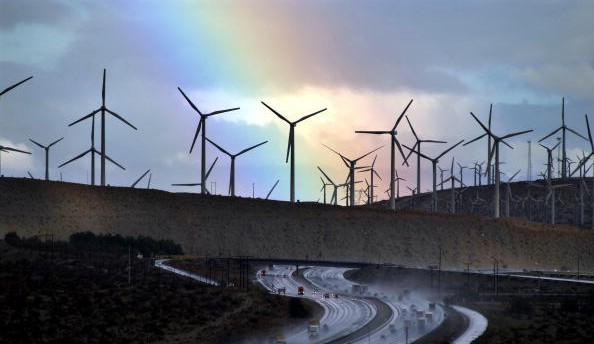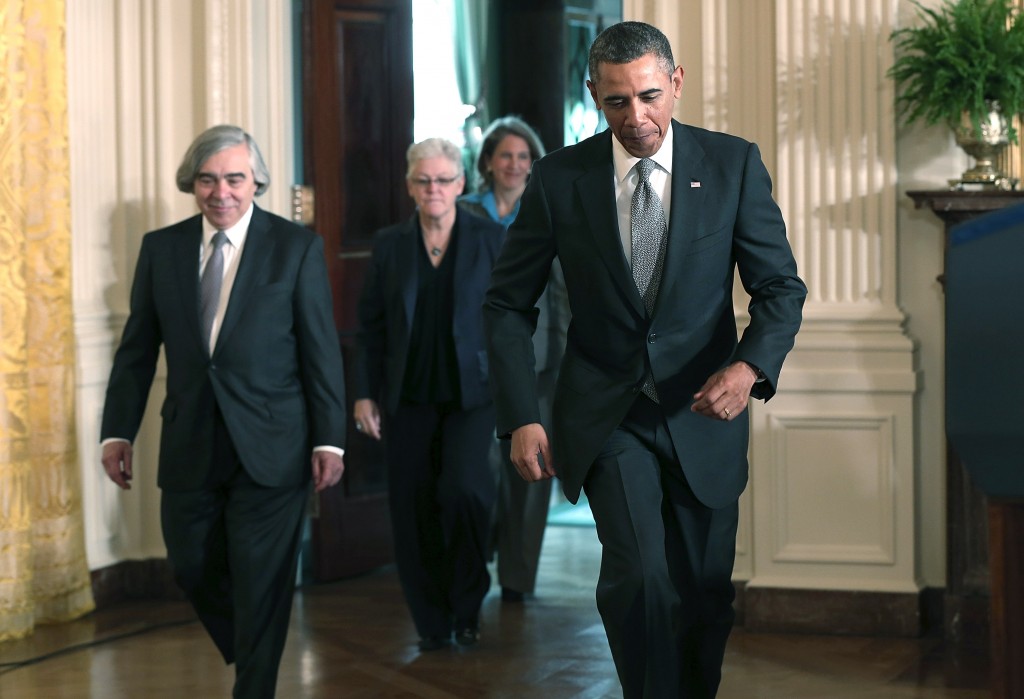Chevron has signed a $10 bin, 50-year agreement with the government of Ukraine to explore for and develop oil and gas in the Olesska field in the western part of the country. Chevron is expected to spend $350MM for exploration over two to three years. Ukraine has a strong interest in developing its domestic resources as a means of reducing… Keep reading →
Bloomberg New Energy Finance
Sign up and get Breaking Energy news in your inbox.
We will never sell or share your information without your consent. See our privacy policy.On the heels of a hope-inspiring report that patents for wind and solar technologies are way up, comes this downer: Global investment in clean energy is plunging. Again. Bloomberg New Energy Finance, which has been tracking these numbers for nearly a decade now, toted up $45.9 billion in clean energy investment in the third quarter of 2013,… Keep reading →
The US federal government has long had a hand in guiding development of the country’s energy sector. In some cases, such as the Department of Energy’s role in the early stages of research and development that helped usher in the shale boom, this has been hailed as a success. In others, such as the highly-publicized… Keep reading →
By Javier E. David Imagine a world where leftover corn, wheat and wood chips can be used to power your car. That’s the aim of cellulosic ethanol, a budding sector of the renewable fuel industry that finds itself struggling to reassert itself in a world of renewed popularity for oil and gas. The process aims… Keep reading →

“No more Solyndras!” may make the headlines but money is continuing to be deployed in the green energy sector each year. It is a global phenomenon. According to an analytical service, Bloomberg New Energy Finance, the first trillion dollars was invested at the end of 2011 and the next trillion will be invested in five years. This is occurring because renewable energy technologies and clean energy are beginning to scale globally, due to cost reductions and wider deployments. Added to this reality is the phenomena of impact investing as younger people with money are more engaged in clean energy solutions. This factor is significant, with 52% of the world’s population being under 30 and generational wealth being transferred to the young.
Another factor in this rising green financial milieu is the nascent impact of crowd funding. Solar Mosaic, a photovoltaic solar play in New York and California, was able to raise $1.1 million in one day for several projects in multifamily housing. The projects are expected to generate 4.5% returns for many years. More capital will be flowing into US clean energy as community solar takes off and smaller investors, who are not accredited at $ 1million in net worth, begin deploying their capital in this sector. It is the law of large numbers and it is opening a flood gate
in innovative financing. The SEC has yet to write the rules of the game in this emerging arena catalyzed by the Jobs Act. Keep reading →

Speakers representing a wide range of sectors, from academia to accounting, had similar views with regard to the importance of corporate social responsibility and renewable energy investments: These things matter now and will only become more important to shareholders and consumers in the future.
“In 5 to 10 years, it will be very difficult to sell products made from ‘black’ energy,” predicted Morten Albaek, Chief Marketing Officer for wind turbine manufacturer Vestas. Albaek was announcing the results of two new energy transparency studies being launched at the New York Bloomberg Tower on September 24th. The studies were released in Rio in August and London last week. Keep reading →

UK consumers care about price – that much is clear from the Vestas Global Consumer Wind Study 2012. And well they might. Government figures for 2011 show that the annual average electricity bill rose by £36 to £453 from the previous year.
It’s a trend that is never likely to be reversed. Electricity prices started to rise sharply from 2004 when the UK became a net importer of natural gas. Around 28% of the UK’s electricity fleet is gas-fired. This connection between fossil fuel imports and high energy prices is not lost on consumers – 77.5% of GCWS respondents expressed very high or moderately high levels of concern about dependency on fossil fuels. Keep reading →
The UK has abundant wind resources from the Atlantic Ocean and the North Sea that buffet the country’s coastlines, and despite current disagreement at the governmental level regarding renewable energy policy, a majority of people surveyed support greater renewable energy use over the next five years. Keep reading →

Energy storage is moving out of the laboratory and into the world of project finance, but how long that evolution will take is in question.
Experts told the Energy Storage Association’s annual conference in Washington DC last week that storage is at a “tipping point.” While storage is being incorporated into some operating projects, the technology is still struggling for recognition of its role, and financing remains a high hurdle. Keep reading →
 Country leaders gathered in Cartagena, Colombia for the Summit of the Americas.
Country leaders gathered in Cartagena, Colombia for the Summit of the Americas.
Latin America’s huge available renewable energy resource is appealing for both local and international project developers, but changes in both legislation and regulation are needed to catalyze markets in the region. Keep reading →




